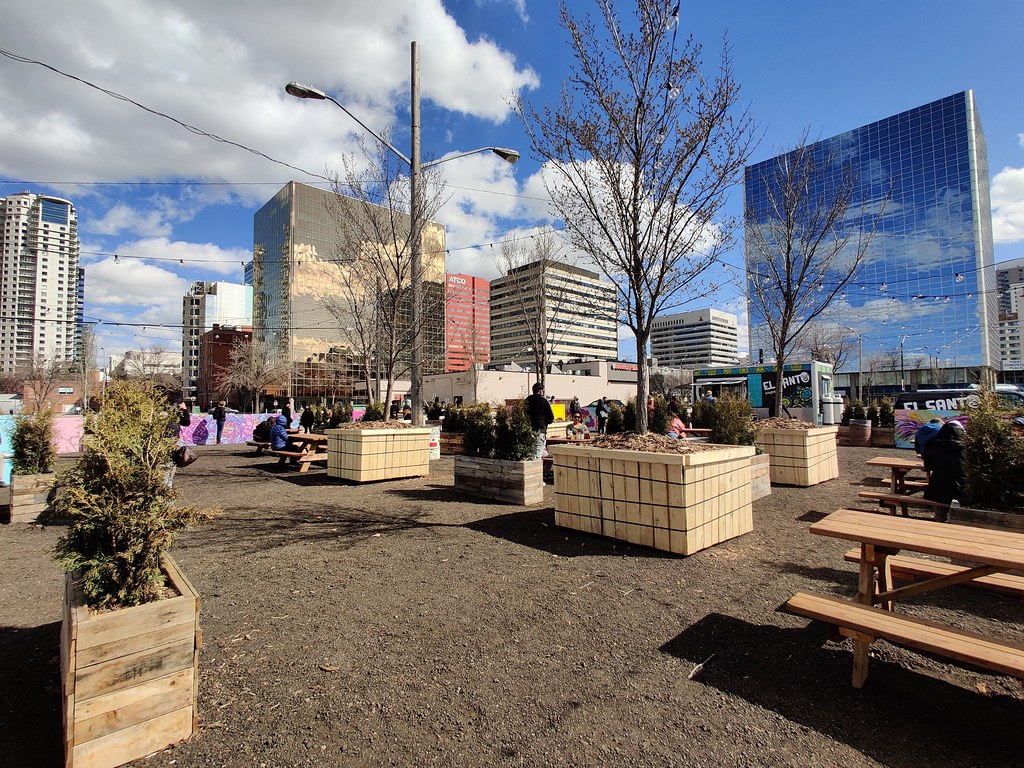The Downtown Vibrancy Strategy is "a call for action" to support the recovery of Edmonton's downtown from the COVID-19 pandemic.
Since 2015, more than $4.4 billion has been invested in downtown development, according to the strategy. But the pandemic has had "an acute impact on downtown vibrancy because there are fewer people downtown on a daily basis, which strikes at the heart of what makes downtown vibrant."
The strategy outlines 20 actions that can be taken over the next two years to help support downtown as a home, as an economic hub, as a destination, and as a safe, welcoming place.
Why is the strategy needed?
The strategy argues that downtown has "faced unique challenges" due to the COVID-19 pandemic.
- In its accompanying report, administration said that up to 60,000 office workers are working from home while thousands of post-secondary students have transitioned to online learning.
- Downtown's residential vacancy rate is 9.1%, according to the strategy, compared to 8.0% city-wide. The office vacancy rate is around 20% while the retail vacancy rate is around 16%.
- The pandemic has been "pronounced for people from marginalized communities, including those experiencing homelessness," the strategy notes.
What's in the strategy?
Expanding public spaces and facilitating the use of underutilized spaces such as vacant land and parking lots would "position vibrancy as an ongoing goal," the strategy says. Here are some other highlights from the 20 actions in the strategy:
- Several actions relate to making downtown safer, but there is no mention of the ongoing opioid crisis that has hit downtown particularly hard. Puneeta McBryan, executive director of the Downtown Business Association, said on June 3 that "there are 2+ overdose deaths happening on average in downtown Edmonton every single day right now."
- At least two actions deal with short-term improvements to public spaces, such as painting worn streetlights and fences, and better coordinating street cleaning and litter collection. One action also calls for public education campaigns to encourage reporting of concerns through 311. But there's no mention of how those concerns will be addressed, given that existing issues reported via 311 remain outstanding nearly a month later.
- Action 3, "make it easier to live downtown," suggests exploring with school boards opportunities to expand grade school offerings downtown.
- To support innovation and entrepreneurship, Action 5 suggests expanding free wifi on downtown streets and piloting a "downtown civic accelerator program."
- Some of the least expensive actions include creating a welcome package for new residents, students, and businesses moving to downtown, creating a downtown loyalty card, and sending "thank you for choosing downtown" letters to recently opened businesses.
What's next?
While many of the actions included in the strategy are already underway, full implementation costs range from $7 million to more than $28 million, "depending on the scope and scale of each action as well as their prioritization."
- Administration intends to spend $5 million from cost-savings realized within the 2021 operating budget to help leverage contributions from partners.
- No new funding is being requested, though administration noted that allocating $5 million to the strategy "will reduce the financial flexibility available to address 2022 COVID-19 related costs."
- Administration said it will continue to work with downtown partners "to prioritize actions, refine implementation leads and supports, and refine funding requirements and funding advocacy to other orders of government."

